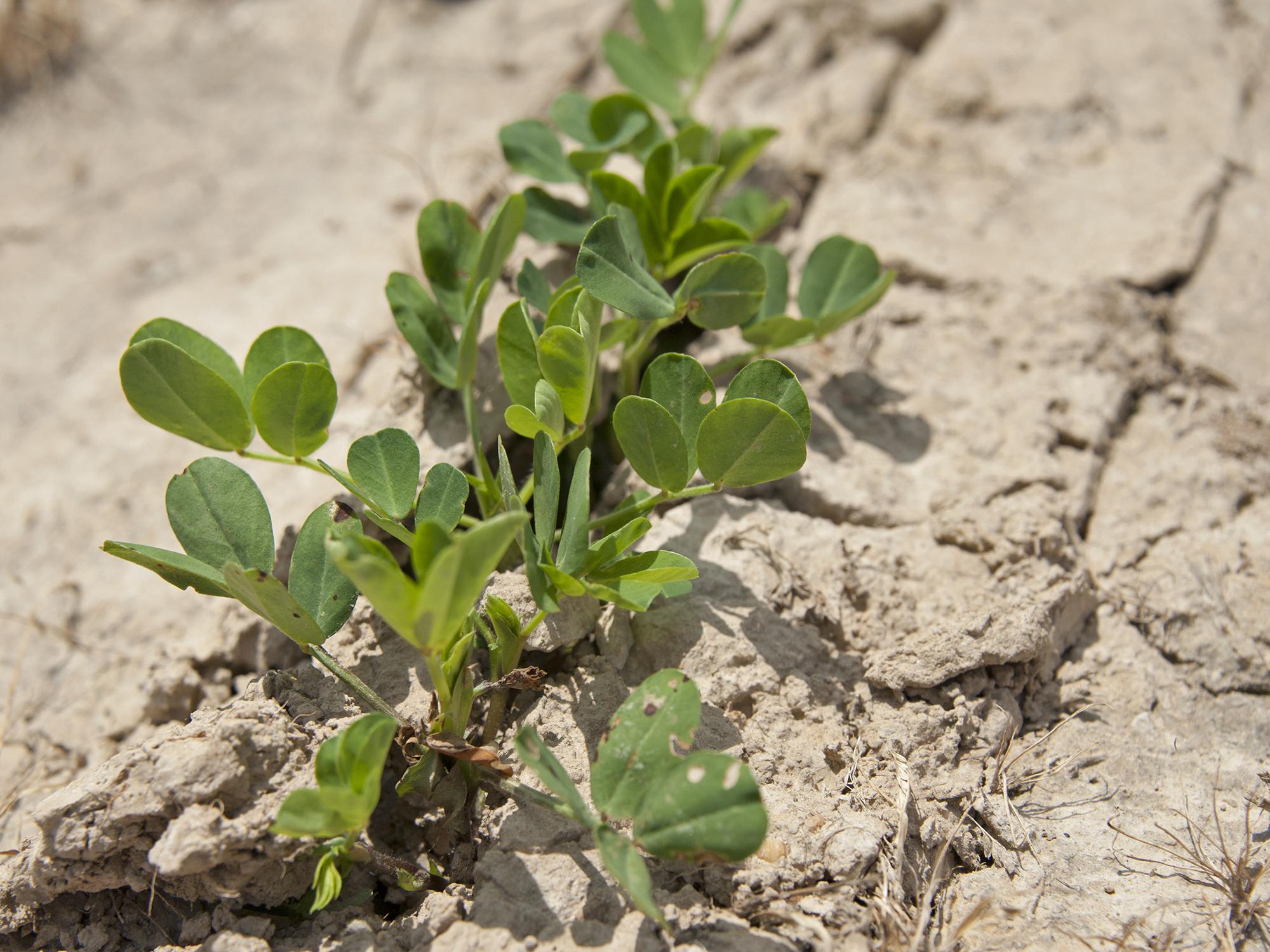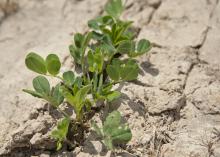Information Possibly Outdated
The information presented on this page was originally released on May 23, 2014. It may not be outdated, but please search our site for more current information. If you plan to quote or reference this information in a publication, please check with the Extension specialist or author before proceeding.
Good weather starts peanut crop off strong
JACKSON -- Most peanut growers are on schedule despite the cool, wet weather that hit Mississippi at the beginning of May.
“We are in pretty good shape all over the state,” said Jason Sarver, peanut specialist with the Mississippi State University Extension Service and Mississippi Agricultural and Forestry Experiment Station. “The cool, wet spell we had set some folks back, but only by a week or so. Depending on this summer’s conditions, their harvest might be pushed a little later, but nothing extreme.”
Alan Atkins, a Monroe County peanut grower with 500 acres, said the growing season started off well for him.
“Planting has gone perfectly so far,” Atkins said. “I could not have asked for any better weather.”
The U.S. Department of Agriculture’s Crop Progress and Condition Report estimated 41 percent of Mississippi’s peanut acreage was planted as of May 16. Farmers had planted just 16 percent of the crop at this time last year.
“With the favorable weather forecast for the next several days, everyone should be nearing completion by the end of May,” Sarver said.
The USDA’s Prospective Planting Report estimates Mississippi will have 45,000 acres of peanuts this year. Sarver said he believes that number will be closer to 35,000 acres.
“I think we’ll be closer to last year’s acreage based on the information I’ve gotten from those involved in the state’s peanut industry,” he said. “If we reach 45,000 acres, I’ll be surprised.”
Growers have experienced few problems so far. Some growers who planted during the last week of April, before the soil temperature was warm enough, had to replant in selected areas, Sarver said. To optimize peanut germination and emergence, soil temperature needs to be 68 degrees or warmer with a favorable forecast to follow.
“I’ve had a lot of worried calls because emergence in those early-planted peanuts has been very slow,” he said. “Fortunately, most of those fields ended up being okay when temperatures warmed up and fields dried out a bit.”
John Michael Riley, Extension agricultural economist, said current wholesale cash prices for peanuts are around $400 per ton but could change as the growing season progresses.
“This is roughly where prices have been in recent years, but the range of prices the last few years has been rather wide at times,” Riley said.
Nationwide, peanut acreage is expected to rise to 1.4 million acres, up about 300,000 acres from 2013, according to the prospective planting report. Most of those acres will be planted in Georgia, which has long been the dominant peanut-producing state, Riley said.
“The drop in corn and bean prices from recent highs likely led to some added acreage,” Riley said. “But the bulk of the increase is in Georgia, where farmers are expected to plant 230,000 acres more than last year, which accounts for 74 percent of the total increase.”










